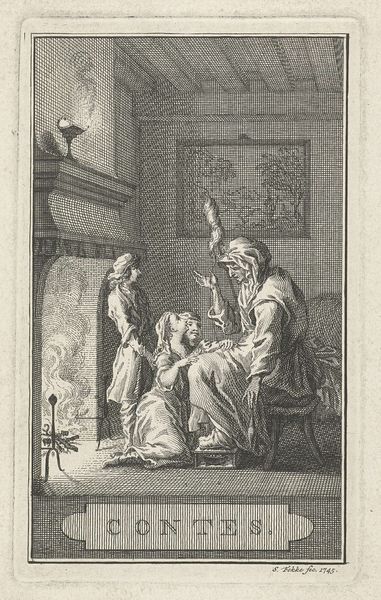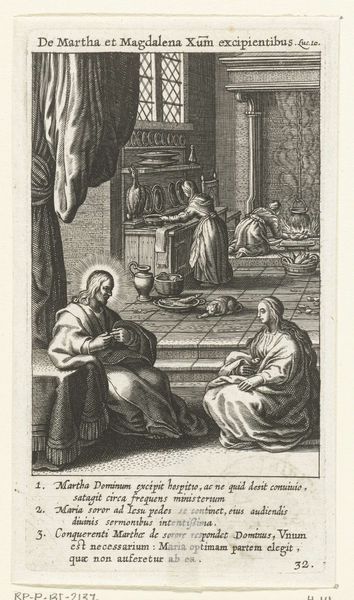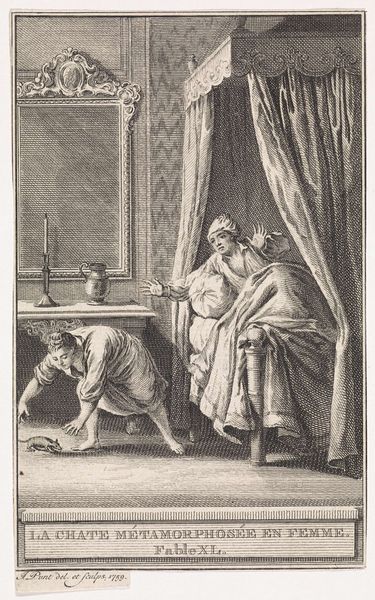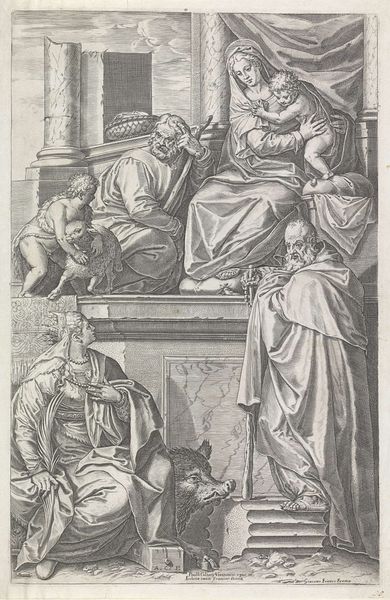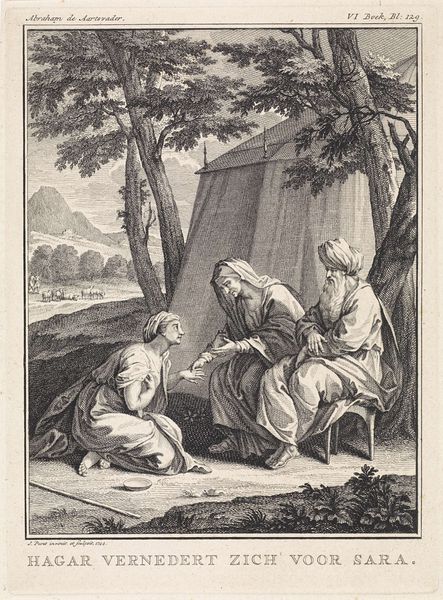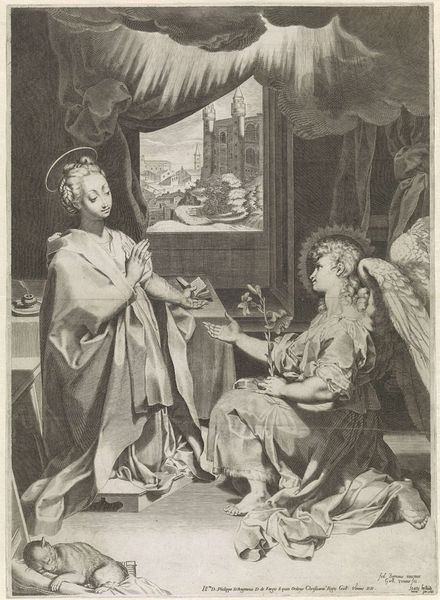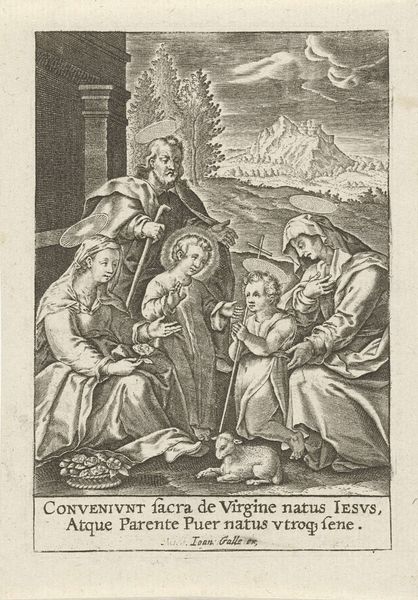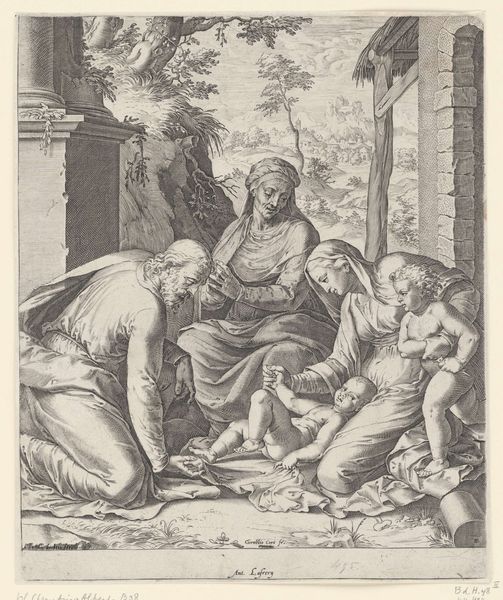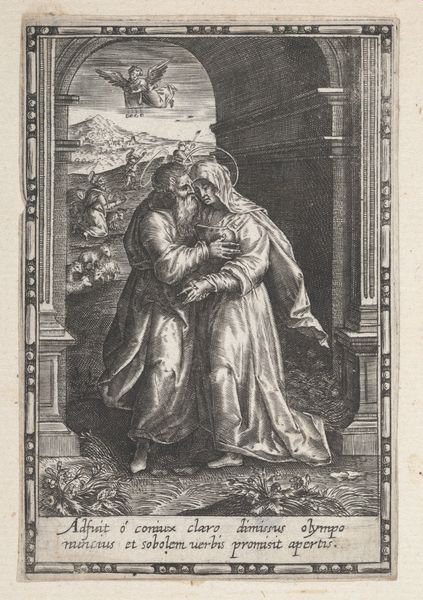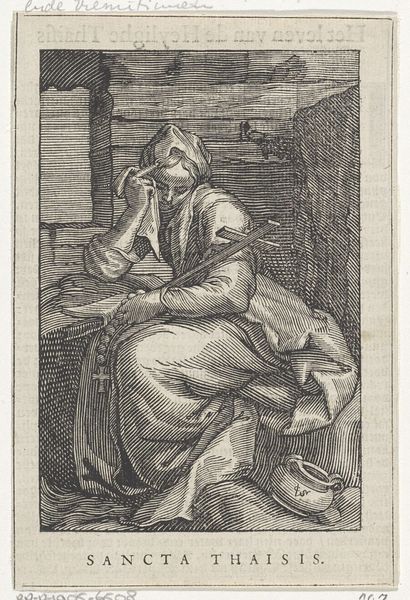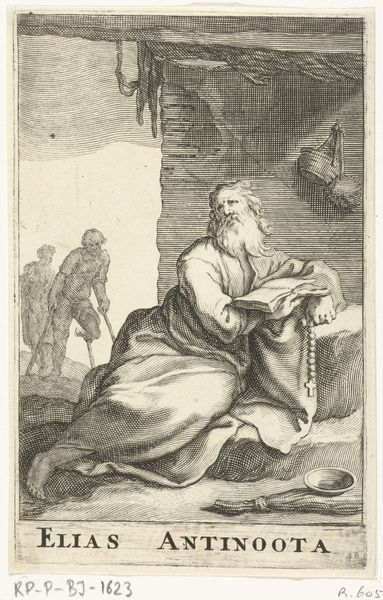
print, engraving
#
allegory
#
baroque
# print
#
figuration
#
line
#
history-painting
#
academic-art
#
engraving
Dimensions: height 142 mm, width 84 mm
Copyright: Rijks Museum: Open Domain
Editor: Here we have "Logica," an engraving from 1720 by Bernard Picart, currently residing in the Rijksmuseum. Looking at it, I am struck by the contrast between the figure who seems lost in thought and the cherubic figure focused on a game or puzzle. What visual elements stand out to you in this piece? Curator: Immediately, one is drawn to the compositional structure, organized with clarity and balance typical of academic art. The sharp, precise lines define forms and delineate space, which are critical to this print. Consider how the artist’s linear choices guide the viewer's eye through distinct spatial zones within a monochrome medium. Editor: So, it's more about the shapes and lines and how they interact than the story? Curator: Precisely. The success of “Logica” lies in its mastery of form. Examine how the folds of the drapery contrast with the smooth skin, yet maintain a cohesive visual language. Ask yourself, how do these textures contribute to the overall aesthetic? Editor: The textures are very consistent throughout the artwork, from the clothes to the cherub's curls. Curator: Notice too, the subtle yet purposeful use of varying line thickness to create depth. Does this linear treatment enhance the perceived volume, or does it flatten the scene, reminding us of the inherent two-dimensionality of printmaking? Editor: I can see how that works to give it depth despite the fact that it's all lines and shapes on paper. Curator: Indeed, by concentrating on the internal compositional strategies, we appreciate the inherent design sophistication that transcends the immediate subject of Logica. Editor: It's a fascinating exercise to analyze art in terms of its construction rather than its story. I've learned a great deal.
Comments
No comments
Be the first to comment and join the conversation on the ultimate creative platform.
